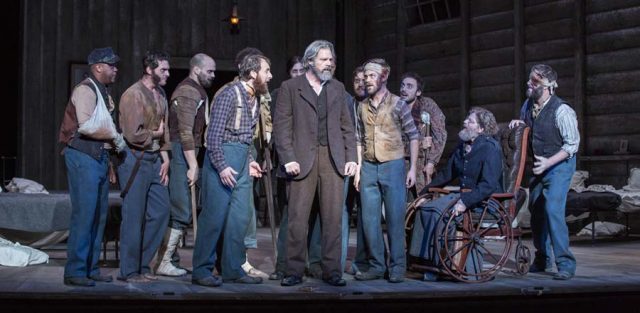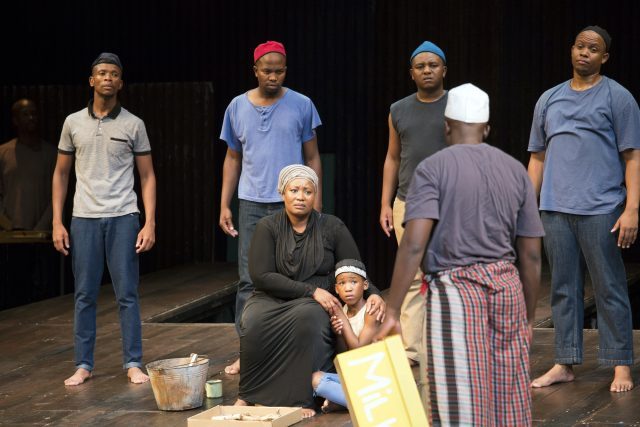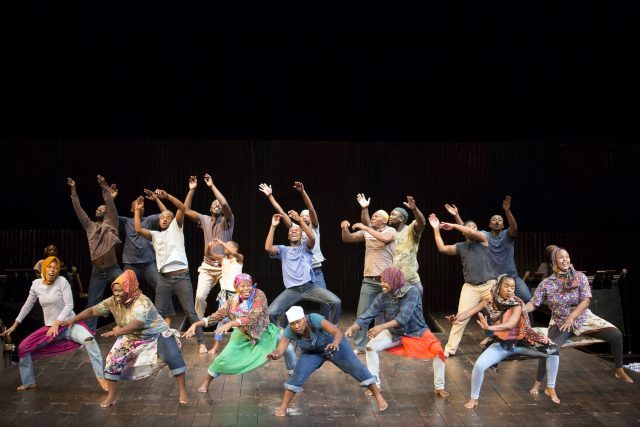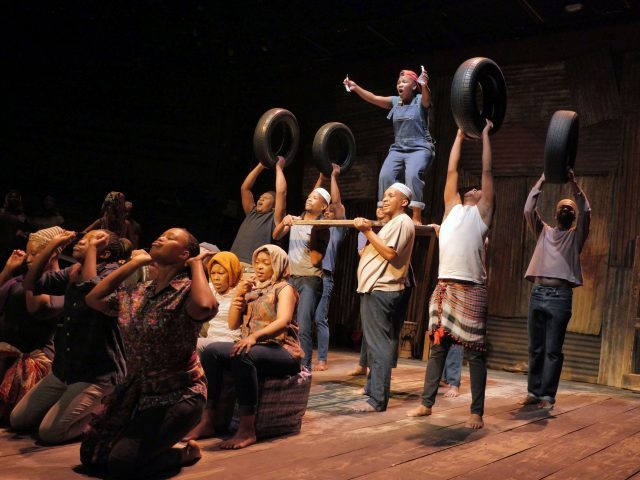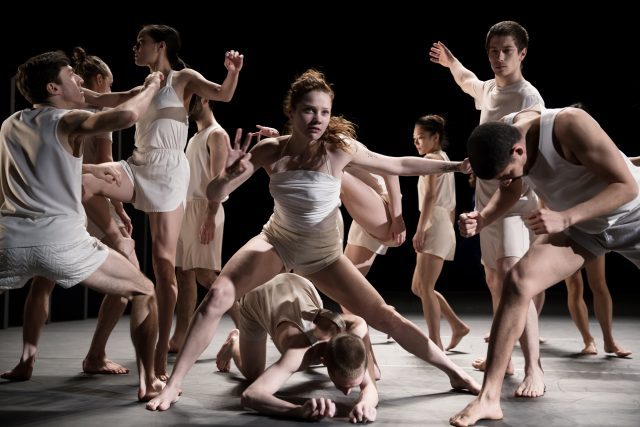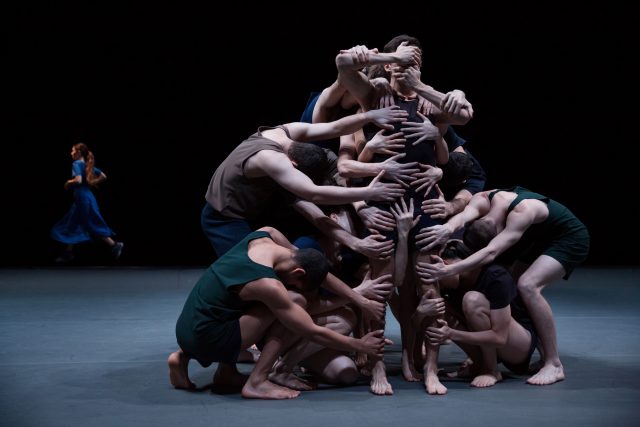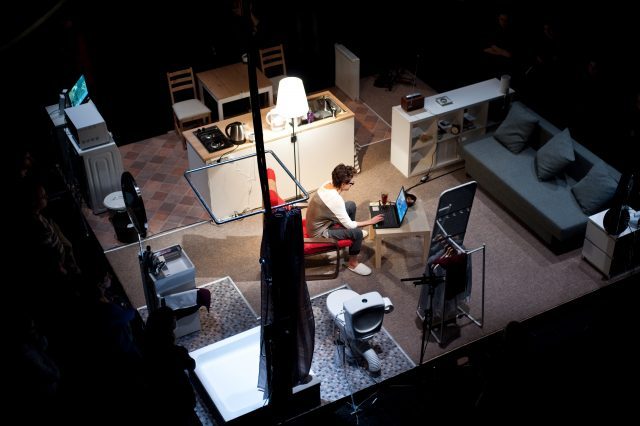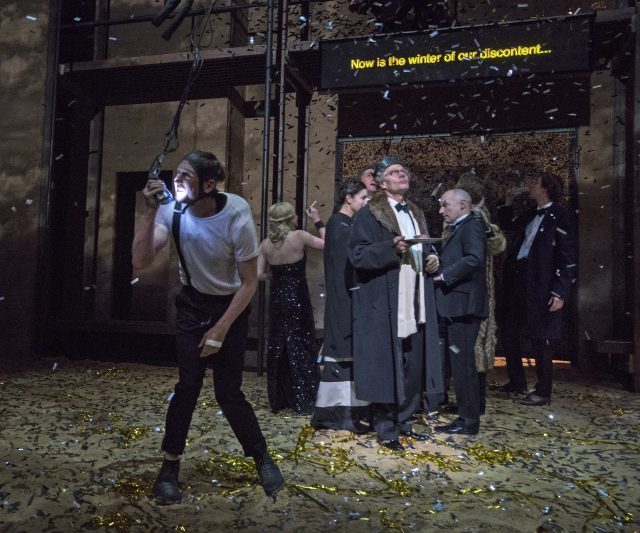
Lars Eidinger makes a major announcement as title character in spectacular staging of Richard III at BAM (photo by Richard Termine)
Brooklyn Academy of Music
BAM Harvey Theater
651 Fulton St.
October 11-14, $35-$115, 7:30
718-636-4100
www.bam.org
www.schaubuehne.de
Richard III is one of the greatest characters in William Shakespeare’s canon, a hunchbacked purveyor of pure evil as he rises to power in fifteenth-century England. The deliciously maleficent and vengeful egomaniac has been played on stage and screen by a plethora of master thespians, including Laurence Olivier, Ian McKellen, Kevin Spacey, Al Pacino, Benedict Cumberbatch, Alec Guinness, Peter Dinklage, Mark Rylance, and George C. Scott. But now there’s a new monarch in town, by far and away the best portrayer of the dastardly demon I have ever seen: German actor Lars Eidinger. In Schaubühne Berlin’s ferocious, nonstop version, continuing at the BAM Harvey through October 14 and directed by Thomas Ostermeier (An Enemy of the People, Hedda Gabler, both at BAM), Eidinger is electrifying, literally and figuratively, as the extraordinary last of the Plantagenets. Eidinger speaks most of his dialogue using an old-fashioned bullet microphone that dangles from above, equipped with a light and a camera for extreme close-ups. Eidinger occasionally throws the mic away from him, then grabs it as it circles back in a kind of homage to Roger Daltrey. At one point the night I went, the mic sent out electric shocks right into Eidinger’s face, but he gamely carried on, muttering about “technical difficulties” with a wry smile. Wearing a white T-shirt, black pants and shoes, and a leather-strap helmet, his Richard is part dilapidated Alex from A Clockwork Orange, part steampunk gone wild, in a world of fashionably dressed men and women who, at the beginning, are at a decadent party straight out of a Christian Schad painting. (The fanciful costumes are by Florence von Gerkan.)
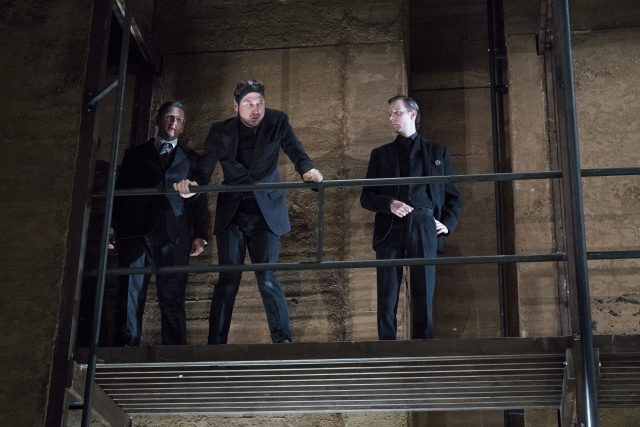
Richard (Lars Eidinger) surveys his domain in Thomas Ostermeier’s fast and furious Richard III (photo by Richard Termine)
As he takes care of business with his brothers, Clarence (Christoph Gawenda, also Dorset and Stanley) and Edward (Thomas Bading, also Lord Mayor of London and the Second Murderer), Hastings (Sebastian Schwarz, also Brakenbury and Ratcliff), Buckingham (Moritz Gottwald), Queen Margaret (Robert Beyer, also Catesby and the First Murderer), and Rivers (Laurenz Laufenberg), the hunched, club-footed Richard drags himself around Jan Pappelbaum’s set, which is fronted by a half-circle sandbox, with a two-story metal structure in the back, with poles that characters can slide down. When Richard wonderfully woos Lady Anne (Jenny König), he strips down almost completely, leaving only the black pillow that is fastened to his shoulder to form his hump. (Is it simply Eidinger’s prop, or could it be Richard’s?) Richard also makes his way into the audience several times, grabbing a seat, chatting patrons up, and waking up someone who was dozing off in the front row. He primarily speaks in German, although he ad libs in English, at which points he often looks back at one of the three surtitle screens to see if these words are projected there. He also quotes Tyler, the Creator and raps an Eminem song. But don’t let all of the unpredictable, devilish fun distract you from Richard’s real purpose: systematically dispatching anyone and everyone in his path to the throne, even a couple of puppets. Nils Ostendorf’s loud, furious score is made even more dramatic by Thomas Witte’s live drumming and Sébastien Dupouey’s video projections; Witte sits behind his kit stage left, clearly enjoying Eidinger’s antics. By the time Richard is ready for the final battle scene, there is no one else left onstage; he is fighting himself, as if the whole thing is taking place in his warped, deranged mind. It’s a captivating finale to a rousing version that breathes invigorating life into this always dependable warhorse.
